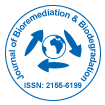Unsere Gruppe organisiert über 3000 globale Konferenzreihen Jährliche Veranstaltungen in den USA, Europa und anderen Ländern. Asien mit Unterstützung von 1000 weiteren wissenschaftlichen Gesellschaften und veröffentlicht über 700 Open Access Zeitschriften, die über 50.000 bedeutende Persönlichkeiten und renommierte Wissenschaftler als Redaktionsmitglieder enthalten.
Open-Access-Zeitschriften gewinnen mehr Leser und Zitierungen
700 Zeitschriften und 15.000.000 Leser Jede Zeitschrift erhält mehr als 25.000 Leser
Indiziert in
- CAS-Quellenindex (CASSI)
- Index Copernicus
- Google Scholar
- Sherpa Romeo
- Öffnen Sie das J-Tor
- Genamics JournalSeek
- Akademische Schlüssel
- JournalTOCs
- Forschungsbibel
- Nationale Wissensinfrastruktur Chinas (CNKI)
- Ulrichs Zeitschriftenverzeichnis
- Zugang zu globaler Online-Forschung in der Landwirtschaft (AGORA)
- RefSeek
- Hamdard-Universität
- EBSCO AZ
- OCLC – WorldCat
- SWB Online-Katalog
- Publons
- Genfer Stiftung für medizinische Ausbildung und Forschung
- MIAR
- ICMJE
Nützliche Links
Open-Access-Zeitschriften
Teile diese Seite
Abstrakt
Post-Remediation Assessment of Crude Oil Polluted Site at Kegbara-Dere Community, Gokana L.G.A. of Rivers State, Nigeria
Tanee FBG and E Albert
Post-remediation assessments of crude oil polluted sites at Kegbara-Dere community in Gokana Local Government Area of Rivers State, Nigeria were carried out to ascertain the degree of success of remediation work done by SPDC in the area in 2008. Soil samples were collected from 3 sites within the location viz; crude oil polluted unremediated site (A), crude oil polluted remediated site (B) and a control site of no pollution and remediation (C). Soil samples were collected at 3 soil depth levels of 0-5cm, 10-15cm and 20-25cm using soil auger and analysed for soil , conductivity, phosphate, nitrate, total organic carbon (TOC), total hydrocarbon content(THC) and total exchangeable cations (TEC). Soil pH and conductivity were obtained with a pH meter (Hanna Hi 8314) and conductivity meter (HACH Ecttesr microprocessor series) respectively. Total hydrocarbon content was measured by spectrophotometric method; total organic carbon content by oxidation method; nitrate content by Kjeldahl method, Phosphate content by ascorbic acid method and total exchangeable cations (Na + , K + , Mg 2+ and Ca 2+ ) by Atomic Absorption Spectrophometer method (AAS). Result showed no significant difference in the soil pH between and within sites. Soil conductivity, nitrate and phosphate improved significantly in the remediated site than the unremediated site. There was a drastic reduction in the total hydrocarbon content (THC) in the remediated site with the highest value of 100 mg/kg as against 350 mg/kg in the unremediated site. Total organic carbon (TOC) fluctuated between and within the 3 sites in the range of 3.63 - 4.11%. Ca 2+ was undetected in the remediated site especially at the 20- 25cm soil depth. This is an indication that the remediation carried out was successful.
Zeitschriften nach Themen
- Allgemeine Wissenschaft
- Biochemie
- Chemie
- Genetik und Molekularbiologie
- Geologie und Geowissenschaften
- Immunologie und Mikrobiologie
- Klinische Wissenschaften
- Krankenpflege und Gesundheitsfürsorge
- Landwirtschaft und Aquakultur
- Lebensmittel & Ernährung
- Maschinenbau
- Materialwissenschaften
- Medizinische Wissenschaften
- Pharmazeutische Wissenschaften
- Physik
- Sozial- und Politikwissenschaften
- Umweltwissenschaften
- Veterinärwissenschaften
Klinische und medizinische Fachzeitschriften
- Anästhesiologie
- Augenheilkunde
- Betrieb
- Dermatologie
- Diabetes und Endokrinologie
- Gastroenterologie
- Genetik
- Gesundheitspflege
- Immunologie
- Infektionskrankheiten
- Kardiologie
- Klinische Forschung
- Medizin
- Mikrobiologie
- Molekularbiologie
- Neurologie
- Onkologie
- Pädiatrie
- Pathologie
- Pflege
- Toxikologie
- Zahnheilkunde

 English
English  Spanish
Spanish  Chinese
Chinese  Russian
Russian  French
French  Japanese
Japanese  Portuguese
Portuguese  Hindi
Hindi